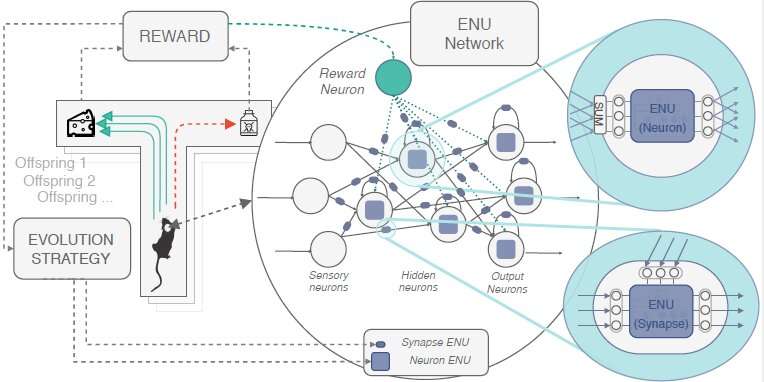January 14, 2021 feature
Evolvable neural units that can mimic the brain's synaptic plasticity

Machine learning techniques are designed to mathematically emulate the functions and structure of neurons and neural networks in the brain. However, biological neurons are very complex, which makes artificially replicating them particularly challenging.
Researchers at Korea University have recently tried to reproduce the complexity of biological neurons more effectively by approximating the function of individual neurons and synapses. Their paper, published in Nature Machine Intelligence, introduces a network of evolvable neural units (ENUs) that can adapt to mimic specific neurons and mechanisms of synaptic plasticity.
"The inspiration for our paper comes from the observation of the complexity of biological neurons, and the fact that it seems almost impossible to model all of that complexity produced by nature mathematically," Paul Bertens, one of the researchers who carried out the study, told TechXplore. "Current artificial neural networks used in deep learning are very powerful in many ways, but they do not really match biological neural network behavior. Our idea was to use these existing artificial neural networks not to model the entire brain, but to model each individual neuron and synapse."
The ENUs developed by Bertens and his colleague Seong-Whan Lee are based on artificial neural networks (ANNs). However, instead of reproducing the overall structure of biological neural networks, these ANNs were used to model individual neurons and synapses.
The behavior of the ENUs was programmed to change over time, using evolutionary algorithms. These are algorithms that can simulate a specific type of evolutionary process based on the notions of survival of the fittest, random mutation and reproduction.
"By using such evolutionary methods, it is possible to evolve these units to perform very complex information processing, similar to biological neurons," Bertens explained. "Most current neuron models only allow single output values (spikes or graded potentials), and in case of synapses only a single synaptic weight value. The main unique characteristics of ENUs is that they can output multiple values (vectors), which could be seen as analogous to neurotransmitters in the brain."
Neurotransmitters, such as dopamine and serotonin, are essentially chemical signals that can transmit messages between different cells, traveling across synapses. These chemical 'messengers' are known to play a key role in many brain functions, including learning and memory. The way in which they interact with one another, however, is still poorly understood.
The ENUs developed by Bertens and Lee can output values that act in ANNs as neurotransmitters do in the brain. This characteristic allows them to learn far more complex behavior than existing, predefined mathematical models.
"I believe that the most meaningful finding and result of this study was showing that the proposed ENUs can not only perform similar mathematical operations as current neuroscience models, but they can also be evolved to essentially perform any type of behavior that is beneficial for survival," Bertens said. "This means it is possible to get much more complex functions for each neuron than the current hand-designed mathematical ones."
In the future, the ENUs created by these researchers at Korea University could help to create more effective bio-inspired machine learning techniques that better reflect the structure and functions of the brain. So far, these units were used to evolve a machine learning agent that can complete tasks in a T-maze environment. Although the research by Bertens and Lee is still in its early stages, the researchers hope to soon use their ENUs to create larger networks that can tackle more complex tasks.
"The brain has billions of neurons and trillions of synapses, yet currently only a handful of ENUs can be simulated efficiently," Bertens. "Therefore, the focus of our future research focus will be to scale up our approach."
More information: Network of evolvable neural units can learn synaptic learning rules and spiking dynamics. Nature Machine Intelligence(2020). DOI: 10.1038/s42256-020-00267-x
© 2021 Science X Network


















